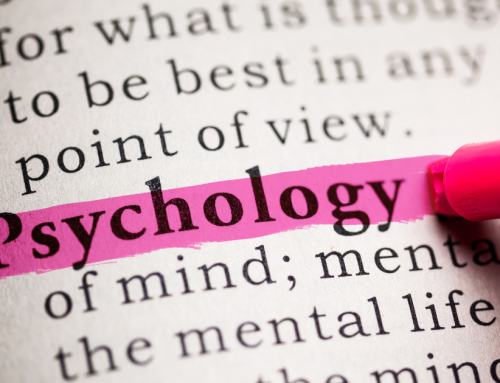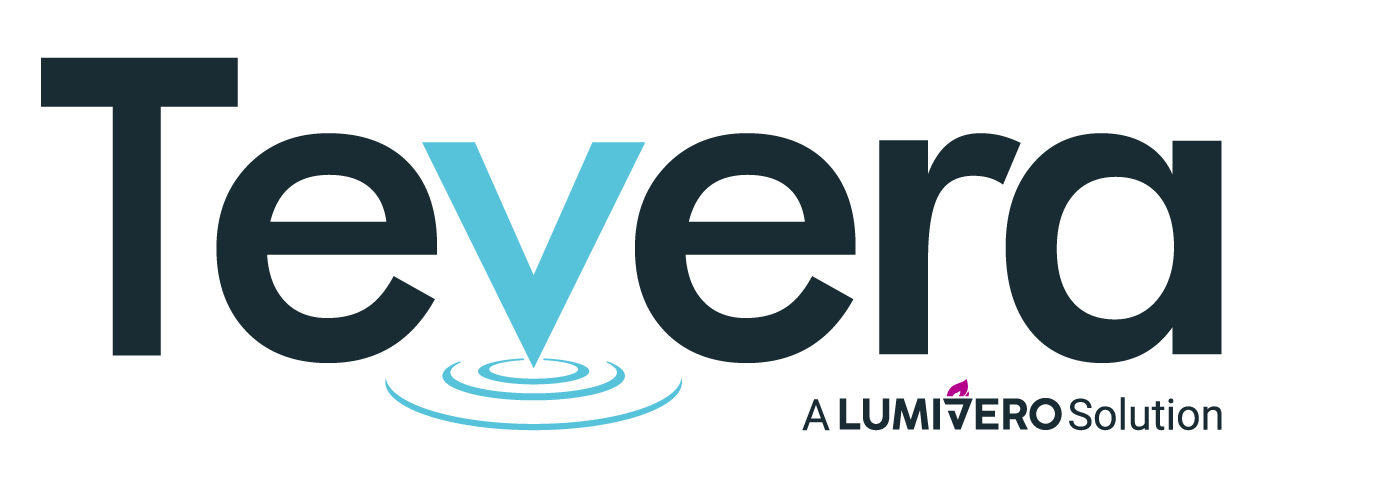3 Ways to Help Your Social Work Students Achieve Licensure
You want your social work students to graduate. Obviously. But you also want them to achieve licensure so they can go on to become gainfully employed. Helping them achieve licensure can be tricky, however, because much of what they need to complete is out of your control as it’s done during their field education experience.
Luckily, there are a few simple things you can do to help them successfully achieve licensure that will also help your program stay competitive. Keep reading to learn 3 ways you can help them prepare for that next step and some helpful tips to make it easy on you and your program.
#1: Outline your students’ educational and career milestones.
Students have a lot on their plates. For graduate students, the demands on their time can be especially stressful as they may be working and raising a family all while continuing their education. As your students’ needs change, your program needs to adapt as well to better assist them toward becoming licensed practitioners. One of the best ways to do this is to simply outline a clear path for them. Remind them of the bigger picture when they get bogged down in the weeds and continue to remind them of this clear path ahead of them.
Begin by outlining the major milestones in their way, like graduation and licensure. Students are motivated by deadlines, even if they’re years away. By keeping these goals front and center, you’re acting as their guide and marking out clear landmarks they can remember and look to when they feel lost.
To help them reach these graduation and licensure milestones, you can further break down the steps they’ll need to take to achieve each. These smaller, steps will be less threatening and will help them feel like they can achieve each because you’re helping them visualize it. For instance, “to achieve licensure you need to complete your site placement hours.”
Imagine you’re creating a map. This map shows the final destination: becoming a practicing social worker as well as all the twists and turns along the way. To make sure your students don’t get lost, you need to set up signposts along the way.
Tip: Create a map to help your students find their way to gainful employment.
#2: Reach students with these messages where they’ll see them.
Unfortunately, it’s not enough to just create the map, you need your students to find out about it and be reminded of it on a regular basis. Remember your own orientation at college or at a new job. It feels like a million things are thrown at you and you’re lucky if you leave and remember where your classes or office is. There’s a reason many refer to the first week of school as “drinking from a firehose.” There’s simply too much information for people to be able to remember every detail, especially a few years later.
Make it easy for your students by sharing with them this “map” you’ve created over and over. Tell them at orientation. Show them with physical materials like brochures or posters. Remind them via emails and on banner messages in your software programs like Canvas or Blackboard. Make sure your career counselors and academic advisors keep reiterating the message.
Maybe you’re thinking that this sounds like a lot of work for something that should be obvious to your students. And you might be right. Some students won’t need these messages. They’re go-getters who will manage their own path, no matter what you do or don’t do for them. However, for most, it helps to have a friendly guide to remind them what the next step is.
Create this map and reminders for the student who would otherwise take longer to graduate or might drop out. A few simple steps can help you decrease your “years-to-graduation” stats and increase your gainful employment stats. You’ll also be positioning yourself as a program that is there to help your students along every step of the journey. All of these things will combine to increase your program’s competitiveness.
Tip: Involve your program’s marketing department and career counseling to create infographics and push this “map” and messages out to your students at key times in their program.
#3: Make students’ field placement experience great.
Real-world experience is crucial to help students prepare not only for their careers but also for licensure. Make this experience a great one for them and easy to complete by providing them with guidance, helping them understand how many hours they need to complete to be eligible for licensure, and the right tools
Help your students get the most out of their field placement by:
- Matching them to a placement that aligns with their career goals. Not only will this help them test out if this is really the direction they want to go and the patients they want to work with but it will also make them more motivated to complete their hours and stay engaged during the experience.
- Help them understand how many hours they need to complete. Avoid a nightmare situation where they show up, ready to achieve licensure but they’re a few hours short of being eligible. Communicate clearly with them upfront and throughout their placement to make sure they understand how many hours they need to complete and have approved to be eligible for licensure.
- Give them the right tools. Tracking hours can be difficult when done on paper or spreadsheets. Supply your students with a time-tracking tool to help them, and their field instructor, make their field placement successful.
Choose a Tool that Will Helps Your Students and Make Your Life Easier Too
Because licensure happens after graduation, it can be difficult to know if your alumni are continuing on the track you set them on. However, staying in touch with alumni is crucial for many reasons. One of the most important is that you need to measure gainful employment rates to report back to accreditation boards and continue attracting new students. To be able to do this accurately, you need a system that tracks your students’ hours towards licensure while they do it that you can also access to gather the data you need.
Whatever tool you choose to use, consider making sure that it performs these functions:
- Easy-to-enter time tracking for students during their field placement.
- One-click approval for hours and assignments to make your site supervisors/field instructors more responsive in real-time.
- Simplified data gathering and report building so that you have everything you need in one place to generate reports like those you need in support of CSWE accreditation.
- Intuitive interface and easy integration so that you and your students don’t spend more time than you have getting up to speed while you learn the new system.
Tevera is designed for social work programs to help your students graduate, achieve licensure, and become gainfully employed.
To learn more about how we can help your program, schedule a product overview today with one of our specialists.
SOLUTIONS
RELATED POSTS
PRODUCT OVERVIEW
See how Tevera can elevate your program.
3 Ways to Help Your Social Work Students Achieve Licensure
You want your social work students to graduate. Obviously. But you also want them to achieve licensure so they can go on to become gainfully employed. Helping them achieve licensure can be tricky, however, because much of what they need to complete is out of your control as it’s done during their field education experience.
Luckily, there are a few simple things you can do to help them successfully achieve licensure that will also help your program stay competitive. Keep reading to learn 3 ways you can help them prepare for that next step and some helpful tips to make it easy on you and your program.
#1: Outline your students’ educational and career milestones.
Students have a lot on their plates. For graduate students, the demands on their time can be especially stressful as they may be working and raising a family all while continuing their education. As your students’ needs change, your program needs to adapt as well to better assist them toward becoming licensed practitioners. One of the best ways to do this is to simply outline a clear path for them. Remind them of the bigger picture when they get bogged down in the weeds and continue to remind them of this clear path ahead of them.
Begin by outlining the major milestones in their way, like graduation and licensure. Students are motivated by deadlines, even if they’re years away. By keeping these goals front and center, you’re acting as their guide and marking out clear landmarks they can remember and look to when they feel lost.
To help them reach these graduation and licensure milestones, you can further break down the steps they’ll need to take to achieve each. These smaller, steps will be less threatening and will help them feel like they can achieve each because you’re helping them visualize it. For instance, “to achieve licensure you need to complete your site placement hours.”
Imagine you’re creating a map. This map shows the final destination: becoming a practicing social worker as well as all the twists and turns along the way. To make sure your students don’t get lost, you need to set up signposts along the way.
Tip: Create a map to help your students find their way to gainful employment.
#2: Reach students with these messages where they’ll see them.
Unfortunately, it’s not enough to just create the map, you need your students to find out about it and be reminded of it on a regular basis. Remember your own orientation at college or at a new job. It feels like a million things are thrown at you and you’re lucky if you leave and remember where your classes or office is. There’s a reason many refer to the first week of school as “drinking from a firehose.” There’s simply too much information for people to be able to remember every detail, especially a few years later.
Make it easy for your students by sharing with them this “map” you’ve created over and over. Tell them at orientation. Show them with physical materials like brochures or posters. Remind them via emails and on banner messages in your software programs like Canvas or Blackboard. Make sure your career counselors and academic advisors keep reiterating the message.
Maybe you’re thinking that this sounds like a lot of work for something that should be obvious to your students. And you might be right. Some students won’t need these messages. They’re go-getters who will manage their own path, no matter what you do or don’t do for them. However, for most, it helps to have a friendly guide to remind them what the next step is.
Create this map and reminders for the student who would otherwise take longer to graduate or might drop out. A few simple steps can help you decrease your “years-to-graduation” stats and increase your gainful employment stats. You’ll also be positioning yourself as a program that is there to help your students along every step of the journey. All of these things will combine to increase your program’s competitiveness.
Tip: Involve your program’s marketing department and career counseling to create infographics and push this “map” and messages out to your students at key times in their program.
#3: Make students’ field placement experience great.
Real-world experience is crucial to help students prepare not only for their careers but also for licensure. Make this experience a great one for them and easy to complete by providing them with guidance, helping them understand how many hours they need to complete to be eligible for licensure, and the right tools
Help your students get the most out of their field placement by:
- Matching them to a placement that aligns with their career goals. Not only will this help them test out if this is really the direction they want to go and the patients they want to work with but it will also make them more motivated to complete their hours and stay engaged during the experience.
- Help them understand how many hours they need to complete. Avoid a nightmare situation where they show up, ready to achieve licensure but they’re a few hours short of being eligible. Communicate clearly with them upfront and throughout their placement to make sure they understand how many hours they need to complete and have approved to be eligible for licensure.
- Give them the right tools. Tracking hours can be difficult when done on paper or spreadsheets. Supply your students with a time-tracking tool to help them, and their field instructor, make their field placement successful.
Choose a Tool that Will Helps Your Students and Make Your Life Easier Too
Because licensure happens after graduation, it can be difficult to know if your alumni are continuing on the track you set them on. However, staying in touch with alumni is crucial for many reasons. One of the most important is that you need to measure gainful employment rates to report back to accreditation boards and continue attracting new students. To be able to do this accurately, you need a system that tracks your students’ hours towards licensure while they do it that you can also access to gather the data you need.
Whatever tool you choose to use, consider making sure that it performs these functions:
- Easy-to-enter time tracking for students during their field placement.
- One-click approval for hours and assignments to make your site supervisors/field instructors more responsive in real-time.
- Simplified data gathering and report building so that you have everything you need in one place to generate reports like those you need in support of CSWE accreditation.
- Intuitive interface and easy integration so that you and your students don’t spend more time than you have getting up to speed while you learn the new system.
Tevera is designed for social work programs to help your students graduate, achieve licensure, and become gainfully employed.
To learn more about how we can help your program, schedule a product overview today with one of our specialists.
3 Ways to Help Your Social Work Students Achieve Licensure
You want your social work students to graduate. Obviously. But you also want them to achieve licensure so they can go on to become gainfully employed. Helping them achieve licensure can be tricky, however, because much of what they need to complete is out of your control as it’s done during their field education experience.
Luckily, there are a few simple things you can do to help them successfully achieve licensure that will also help your program stay competitive. Keep reading to learn 3 ways you can help them prepare for that next step and some helpful tips to make it easy on you and your program.
#1: Outline your students’ educational and career milestones.
Students have a lot on their plates. For graduate students, the demands on their time can be especially stressful as they may be working and raising a family all while continuing their education. As your students’ needs change, your program needs to adapt as well to better assist them toward becoming licensed practitioners. One of the best ways to do this is to simply outline a clear path for them. Remind them of the bigger picture when they get bogged down in the weeds and continue to remind them of this clear path ahead of them.
Begin by outlining the major milestones in their way, like graduation and licensure. Students are motivated by deadlines, even if they’re years away. By keeping these goals front and center, you’re acting as their guide and marking out clear landmarks they can remember and look to when they feel lost.
To help them reach these graduation and licensure milestones, you can further break down the steps they’ll need to take to achieve each. These smaller, steps will be less threatening and will help them feel like they can achieve each because you’re helping them visualize it. For instance, “to achieve licensure you need to complete your site placement hours.”
Imagine you’re creating a map. This map shows the final destination: becoming a practicing social worker as well as all the twists and turns along the way. To make sure your students don’t get lost, you need to set up signposts along the way.
Tip: Create a map to help your students find their way to gainful employment.
#2: Reach students with these messages where they’ll see them.
Unfortunately, it’s not enough to just create the map, you need your students to find out about it and be reminded of it on a regular basis. Remember your own orientation at college or at a new job. It feels like a million things are thrown at you and you’re lucky if you leave and remember where your classes or office is. There’s a reason many refer to the first week of school as “drinking from a firehose.” There’s simply too much information for people to be able to remember every detail, especially a few years later.
Make it easy for your students by sharing with them this “map” you’ve created over and over. Tell them at orientation. Show them with physical materials like brochures or posters. Remind them via emails and on banner messages in your software programs like Canvas or Blackboard. Make sure your career counselors and academic advisors keep reiterating the message.
Maybe you’re thinking that this sounds like a lot of work for something that should be obvious to your students. And you might be right. Some students won’t need these messages. They’re go-getters who will manage their own path, no matter what you do or don’t do for them. However, for most, it helps to have a friendly guide to remind them what the next step is.
Create this map and reminders for the student who would otherwise take longer to graduate or might drop out. A few simple steps can help you decrease your “years-to-graduation” stats and increase your gainful employment stats. You’ll also be positioning yourself as a program that is there to help your students along every step of the journey. All of these things will combine to increase your program’s competitiveness.
Tip: Involve your program’s marketing department and career counseling to create infographics and push this “map” and messages out to your students at key times in their program.
#3: Make students’ field placement experience great.
Real-world experience is crucial to help students prepare not only for their careers but also for licensure. Make this experience a great one for them and easy to complete by providing them with guidance, helping them understand how many hours they need to complete to be eligible for licensure, and the right tools
Help your students get the most out of their field placement by:
- Matching them to a placement that aligns with their career goals. Not only will this help them test out if this is really the direction they want to go and the patients they want to work with but it will also make them more motivated to complete their hours and stay engaged during the experience.
- Help them understand how many hours they need to complete. Avoid a nightmare situation where they show up, ready to achieve licensure but they’re a few hours short of being eligible. Communicate clearly with them upfront and throughout their placement to make sure they understand how many hours they need to complete and have approved to be eligible for licensure.
- Give them the right tools. Tracking hours can be difficult when done on paper or spreadsheets. Supply your students with a time-tracking tool to help them, and their field instructor, make their field placement successful.
Choose a Tool that Will Helps Your Students and Make Your Life Easier Too
Because licensure happens after graduation, it can be difficult to know if your alumni are continuing on the track you set them on. However, staying in touch with alumni is crucial for many reasons. One of the most important is that you need to measure gainful employment rates to report back to accreditation boards and continue attracting new students. To be able to do this accurately, you need a system that tracks your students’ hours towards licensure while they do it that you can also access to gather the data you need.
Whatever tool you choose to use, consider making sure that it performs these functions:
- Easy-to-enter time tracking for students during their field placement.
- One-click approval for hours and assignments to make your site supervisors/field instructors more responsive in real-time.
- Simplified data gathering and report building so that you have everything you need in one place to generate reports like those you need in support of CSWE accreditation.
- Intuitive interface and easy integration so that you and your students don’t spend more time than you have getting up to speed while you learn the new system.
Tevera is designed for social work programs to help your students graduate, achieve licensure, and become gainfully employed.



















